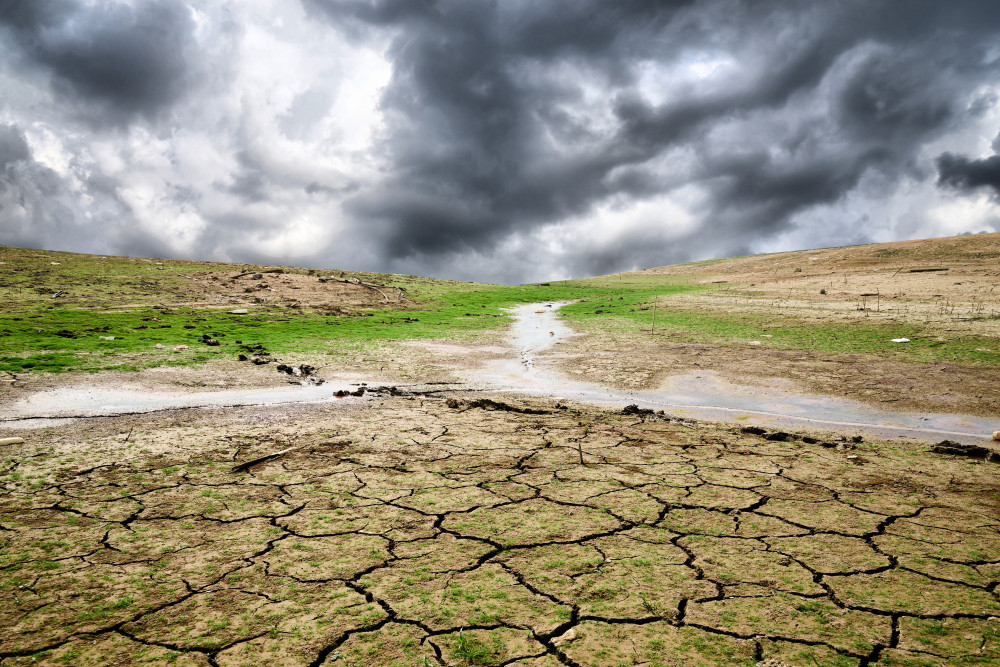Water Crisis: Lessons from Nature
- October 14, 2014
- By Robin Koontz
 Pretty much everyone is aware of the recent Ice Bucket Challenge which set out to bring attention and charitable contributions to ALS, a progressive neurodegenerative disease that is, so far, incurable. There was an outcry from more than a few about how people dunking a few gallons of ice cubes on their heads for charity were wasting precious water when there is a water crisis in the world. Others scoffed, “What’s up with that? It’s only a few gallons of water!”
Pretty much everyone is aware of the recent Ice Bucket Challenge which set out to bring attention and charitable contributions to ALS, a progressive neurodegenerative disease that is, so far, incurable. There was an outcry from more than a few about how people dunking a few gallons of ice cubes on their heads for charity were wasting precious water when there is a water crisis in the world. Others scoffed, “What’s up with that? It’s only a few gallons of water!”
What’s up with that is that the many parts of the world, including parts of the U.S., are in the midst of a severe water crisis. So, not only did the bucket challenge bring over $100 million dollars and more awareness to ALS, more people were alerted to the current water crisis. Ask what your students in your area thought about the challenge. You might spark an interesting discussion.
Every organism, down to the smallest microbe, depends upon water to survive. We would die without it. Yet humans are the only living organisms that waste and deliberately pollute water! In 2011, it was estimated that nearly two people in ten had no source for safe drinking water. Millions of people around the world, most of them children, get diseases stemming from a lack of clean water.
Scientists study nature for ways to manage our most precious resource. Here are just a few of their nature-inspired discoveries:
Fog-basking beetles can capture water from the night air. When the fog comes in, the little beetle sticks its rearend into the air, facing its back to the fog. Bumps on the beetle’s shell troughs moisture from the air right into its mouth! One clever inventor copied the beetle’s trick to invite a “Dew Bank” bottle. Morning dew condenses on the cold, beetle-shaped ribbed stainless steel container and the water collects in a reservoir, ready to drink.
But the fog-basking beetle has inspired more than just a water bottle. Two scientists copied the way the beetle collects water and invented a synthetic surface with two layers: the top is hydrophilic (mixes with water), and the bottom is hydrophobic (repels water). This system makes water droplets detach as soon as they get large enough. The idea is to use the material to coat the roofs of houses and buildings, channeling the collected condensation from fog and dew into a tank.
Other inventors have tried lots of ways to harvest fog and dew. The idea of collecting fog is an ancient one – perhaps someone noticed how tree leaves collect droplets from fog and dew and created the first fog collector made of leaves! One kind of fog collector today uses a screen to catch droplets in the air. Just a 6.5-foot (2 meter) collector can collect up to 2.6 gallons (10 liters) of water in 24 hours! Fog collection projects have recently been set up in different parts of the world, such as Peru, Ecuador, Guatemala, Cape Verde Islands, and South Africa.
Scientists have also been studying spider silk, which is very effective at collecting and holding water from the air. They discovered that the silk fibers change their structure when wet, forming hydrophilic spindle knots. The scientists hope to mimic this effect to create materials that will work more efficiently for fog screens.
When a camel breathes out moist air, its nostrils suck in, trapping and condensing the moisture. They also suck in water from the humid night air. Deserts are basically super-hot during the day and often very cold at night, plus there is pretty much no water. Imagine trying to grow food in such a hostile place! A pilot project called the Sahara Forest Project was set up to try new ways to figure out how to cultivate desert land to grow food crops. The camel as well as the fog-basking beetle inspired some aspects of Sahara Forest Project’s design.
The oceans are filled with water! Why can’t we just use that resource? Salt is the main reason. Companies have been coming up with ways to desalinate seawater for centuries. But so far the process has proven to be very expensive, requiring a tremendous amount of energy. Desalination has been accomplished in nature. For instance, mangrove trees have a special ability to filter salt out of seawater through membranes in their structures. Seabirds use their nasal glands to expel brine and enjoy fresh water. We can also use the sun’s energy to power desalination plants.
Scientists are learning from these methods to try to come up with cheaper ways to make use of the vast oceans. Check out Seawater Greenhouse to see more ideas: http://www.seawatergreenhouse.com
The way we can best use and conserve water touches almost every part of our lives. If we look at how other organisms on earth have faced a shortage of water, we might learn ways to deal with this crisis. Share the article below about the biomimicry challenge, called: What Would You Ask Nature?. It touches on how humans have a hard time conserving and changing their lifestyles to adapt to our changing environment. “Animals and plants have a very intrinsic ability to monitor and self-regulate, whereas humans are so far removed from this cycle that they only pay attention when they experience what the designers named a ‘heart attack moment’ where resources have been depleted and it’s too late.”
http://www.fastcompany.com/1648801/biomimicry-challenge-ibm-smart-design-draws-water-conservation-inspiration-ecosystems
Ask your students questions after sharing all of this information:
How much water do you use in a day?
Do you waste water?
How can you save water?
Can you think of ways that nature manages water that humans can learn from?
And perhaps, make it a school effort to collect, conserve, and make better use of our most precious resource.


